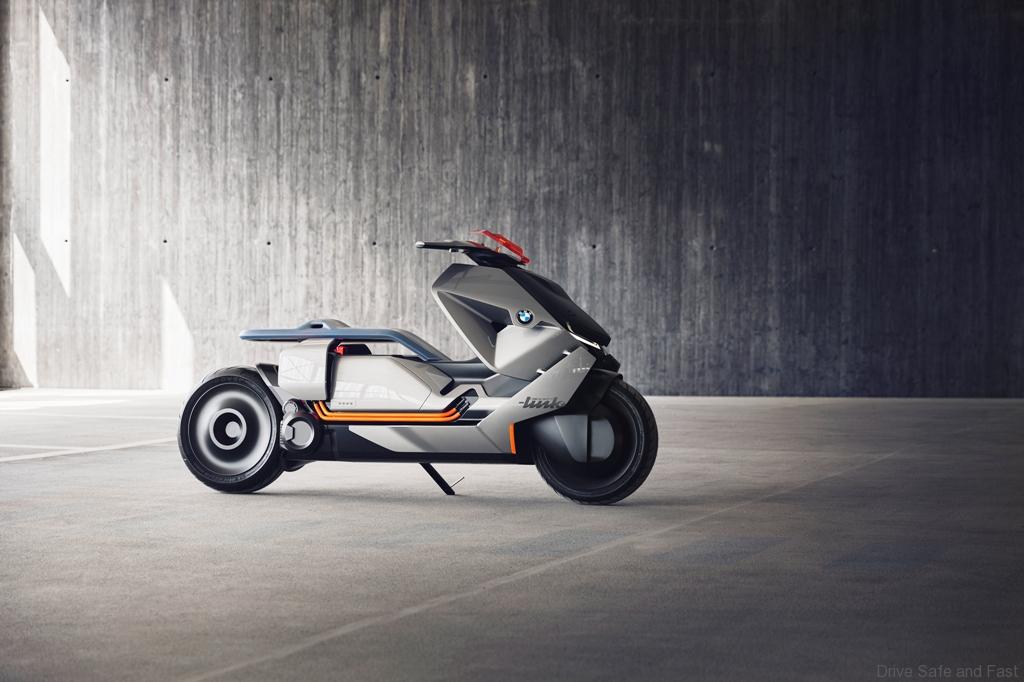At the Concorso d’Eleganza Villa d’Este 2017, the BMW Group is presenting its vision of zero-emission urban mobility on two wheels: the BMW Motorrad Concept Link. Inspired by the BMW Motorrad Vision Next 100, the design study unites digital connectivity with the demands of urban mobility on two wheels.

The special character of the concept vehicle becomes clear right away thanks to the completely new design language. The low-slung, stretched body and the flat seat combined with the diagonally rising front section create a modern yet distinctive silhouette. The use of colours emphasises this even further: the front trim in Liquid Metal Titanium contrasts with the semi-matt black body.

The Concept Link also deliberately showcases the technology used as part of the design package. That is why the side panels don’t completely cover the side section at the rear. Instead they stretch across the vehicles side like little wings allowing views of the technical elements like drive unit, cooling ribs, single-sided swing arm, spring strut and tooth belt. At the same time they help improve aerodynamic air flow. The iconic rear lights have been integrated into the rear side panels in the form of two C-shaped light elements.

The new and emphatically function-driven architecture provides a high level of riding pleasure due to the E-drive. The Concept Link is ideally suited to meet the requirements of modern urban mobility with fast acceleration and easy handling. Due to its low overall height, getting on is easy from the side or even from the back. A reverse gear ensures that it is easy to manoeuvre, making it ideal to park in tight city spaces.

The seat bench can be adjusted lengthwise to suit every preference. The proportions also make room for new storage space. In the centre section, underneath the seat bench, a luggage compartment offers versatile storage opportunities. The rider can access this quickly and easily at all times using a sliding door.

The focus is also on being able to enjoy the riding experience without any distractions. The classic instrument cluster has been dropped. Instead speed, navigation and battery information is projected onto the windshield directly into the rider’s field of vision. Secondary information is displayed on the large-surface panel, which matches the design perfectly and is located below the handlebars.


